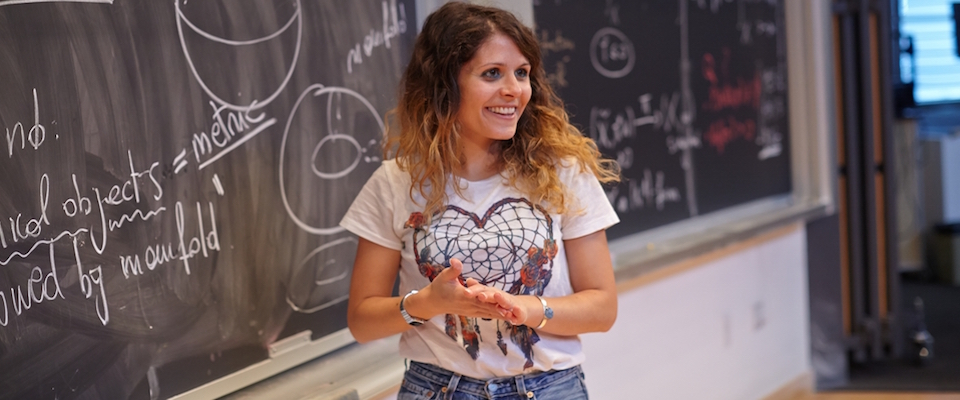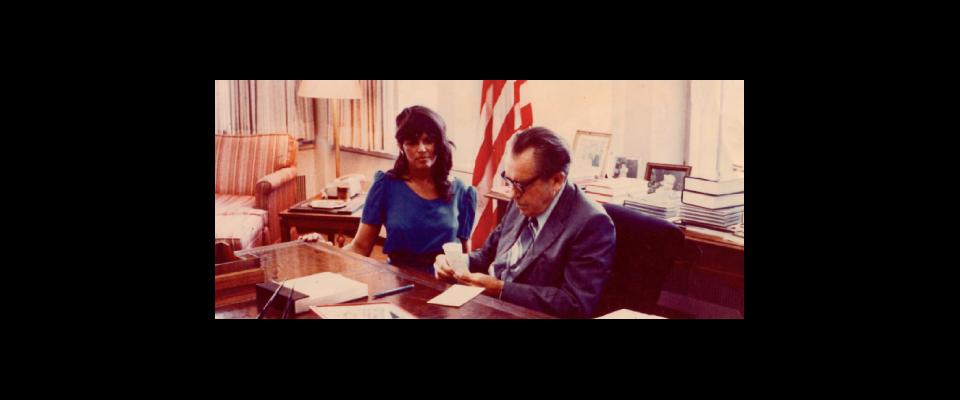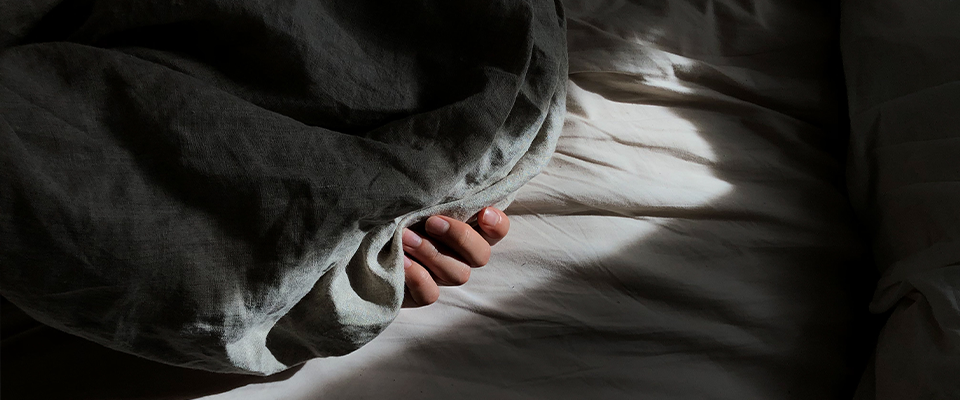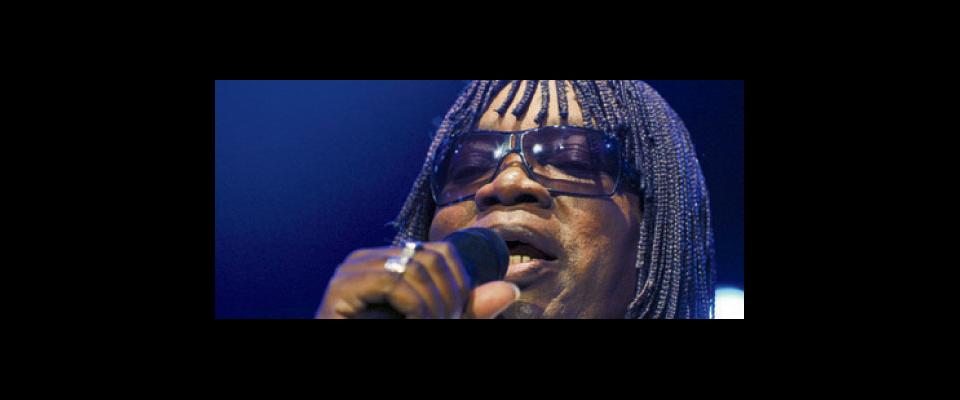Ever see the TV game show Let’s Make a Deal? Contestants are given a choice of three doors and told that behind one of them is a shiny new sports car. If they pick door No. 1, the host may open door No. 2 to reveal that there’s nothing behind it. Then he asks if they want to stick with door No. 1 or switch to door No. 3. What’s the best move?
Answer: “You should always switch to door No. 3,” says David Eisenbud, director of the Mathematical Sciences Research Institute (MSRI, for short), a think tank high up in the Berkeley Hills, right above the Lawrence Hall of Science. “Your chances are twice as good as they would be if you stick with your original door. It won’t work every time, but in the long run it always will.”
If you want to know why this is so, the institute has posted a 5-minute video in which Cal adjunct statistics professor Lisa Goldberg, research director of the Center for Risk Management Research, explains it. In math circles, this conundrum is known as the Monty Hall Problem, named after the original host of Let’s Make a Deal, Monty Hall. It’s one of a number of videos that MSRI has posted on its YouTube channel, Numberphile, to help convince the general public that, as actress and math buff Danica McKellar (she played Winnie Cooper on The Wonder Years) titled her first book, Math Doesn’t Suck.
Numberphile is YouTube’s most popular informal mathematics channel, with more than 1.6 million subscribers. Among its other offerings: “The Curse of Lane 8” (how math proves that Lane 8 is the worst spot for a bike racer), “Homer Simpson vs. Pierre de Fermat” (d’oh, is it possible that a cartoon buffoon solves the theorem?), “Do Numbers Exist?” (do mathematicians discover math or invent it?) and “How to Scientifically Cut a Cake” (we’ve all been doing it wrong).
“I love being here…. It’s like being on the ‘dream team’ in the Olympics!”
Such videos are just one of myriad ways that the renowned institute—chock full of top mathematicians, many of whom embrace the term “math geek” as a badge of honor—shares with the outside world their enthusiasm about all things numerical. Founded as a nonprofit more than three decades ago by three Cal mathematicians, MSRI operates on University of California property and has a uniquely close relationship with UC Berkeley. But it is sponsored by more than 100 universities and institutions around the world, and is recognized as a top center for collaborative research spanning all branches of mathematical sciences, leading to breakthroughs in science, tech, medicine and economics. Some 2,000 mathematicians visit annually, including every recipient of the Fields Medal (the equivalent of the Nobel Prize in math). Only 10 percent of the postdocs who apply for MSRI’s programs are invited to attend, but 100 percent of those invited accept.
They arrive to find serious scholarship under way in a decidedly playful atmosphere. Everywhere you look, the place abounds in art and design incorporating whimsical mathematical jokes—if you know enough to understand them (more about that later). And MSRI continually reaches out to the public, its researchers seemingly convinced that if we all paid more attention to math, we would fall in love with it as much as they have.
Take, for example, its sponsorship of a free lecture series featuring both professional mathematicians and non-mathematicians who just happen to have math fascination, including celebrity entertainers Steve Martin, Robin Williams, Alan Alda (whose lecture was titled, of course, M*A*T*H), playwright Tom Stoppard and avant-garde composer Philip Glass.
Many mathematicians find close parallels between math and music, and the institute sponsors a concert series every year. Institute director Eisenbud himself plays flute and sings art-songs, especially Schubert, Schumann and Brahms. He is also an accomplished amateur juggler who—naturally—has written an academic paper on the mathematics of juggling.

“I have a brother who is a jazz musician, and he hates math,” says Christine Breiner, assistant professor of mathematics at Fordham University in New York, who is in residence at the institute this semester. “I just tell him that math is art that no one watches. The creative process is very similar.”
Both processes can be frustrating, too. “You can spend days, weeks, even months stumbling around in the dark, waiting to come upon a solution,” says Breiner. “You’re walking around a little bit blind, but everyone else is, too. And maybe there is no solution. But I don’t fear staring at a blank wall. The only thing I fear is running out of time to figure out that blank wall. For everyone here at MSRI, it’s all about the process. We clearly love stumbling around in the dark. We are gluttons for this kind of punishment.”
MSRI hosts up to four programs every year, each one focusing on a particular field of study, and brings together up to 1,700 scholars in those fields from around the world to rub shoulders. Breiner is one of the participants in the current program on Differential Geometry, a trans-disciplinary field that uses the techniques of integral calculus and algebra to study problems in geometry.
“I have a brother who is a jazz musician, and he hates math. I just tell him that math is art that no one watches. The creative process is very similar.”
“A place like MSRI brings together simultaneously a bunch of people whose lives overlap,” says Curtis McMullen, a Harvard math professor and winner of the Fields Medal. “We’re all working on different parts of this mathematical reality, and it’s tremendously rewarding to be talking with somebody on the same page. We mathematicians don’t have laboratories. Our laboratory is meeting other mathematicians.
“For everyone here, coming to MSRI is not a routine part of their mathematical career; it’s an extraordinary opportunity that comes along for a few weeks or, if you’re lucky, for a whole semester,” he adds. “We all have regular lives. We teach undergrads; we have grad students. At MSRI you’re suddenly devoid of these responsibilities and have the opportunity to go into whatever strikes you, which is a real luxury.”
And math is literally everywhere you look. The paintings on the walls only appear to be nothing more than abstract art; actually, they’re visual representations of mathematical formulas.

On one wall is a geometric mosaic titled Tessellation Tango, made from about 950 handmade porcelain tiles of two basic rhombic shapes (a skinny diamond and a fat diamond). On the left side, the tiles combine into a “tumbling blocks” or “reversing cube” pattern. On the right side, the tiles fit together to form fragments of a Penrose tiling, which Wikipedia defines as “a non-periodic tiling generated by a periodic set of prototiles.” (Did that clear it up for you?)
In the garden is a sculpture titled The Eightfold Way, representing a mathematical construction that has been studied by mathematicians for more than a century from many points of view: geometry, symmetry, group theory, algebraic geometry, topology, number theory, complex analysis. The curved surface and its amazing properties, as depicted by the sculpture, were discovered in 1879 by the German mathematician Felix Klein—inventor of the Klein Bottle, which has no inside or outside, per se, and can only be viewed properly in four dimensions—and is often referred to as the Klein quartic or the Klein curve in his honor.
Even MSRI’s street address, 17 Gauss Way, is an inside joke. Karl Friederich Gauss, known as “the prince of mathematicians,” was a 19th-century mathematician and astronomer who invented the bell curve and was the first to realize that space itself could be curved. A unit of magnetism is named after him, hence the degaussing machines that people used to demagnetize the heads on your tape deck back in the days when people still had tape decks.

“When he was 19 he solved a 2,000-year-old mystery that had been left over from antiquity,” says Eisenbud. “The question was what regular polygons can be constructed with a compass and straight edge alone? Gauss proved a 17-sided polygon—known as a heptadecagon, or 17-gon, for short—can be constructed and completely solved the problem.
“The street that MSRI and our neighbors, the Silver Space Sciences Laboratory, are on was not named for many years. They just gave us all the address ‘1000 Centennial Drive,'” he adds. “But this was a real problem for the SSL because they create experiments and satellites for NASA, and delivery drivers could never find them, so it became necessary to name this street. The first proposal was to name the road after a blue and gold double star [after the Cal colors], but I proposed that the street be named after Gauss, who was also a famous astronomer—he was the first director of the Royal Observatory in Göttingen, Germany. Someone told me that the SSL wouldn’t think Gauss was an astronomer and would reject it, but when I suggested the name to the director of the SSL, he said, ‘Oh, did Gauss have something to do with mathematics?’ When they were assigning street numbers they graciously offered us Number 1, but we, of course, opted for Number 17.”
Mathematicians have a particular fascination with the number 17, and references to it can be found throughout the building. The light fixture over the conference table in the Reading Room is a 17-gon, and so is the Boardroom table.
MSRI also has a reputation as a relatively female-friendly institution in a field that has been dominated by men for far too long. “About 25 percent of the people here in this program are women,” says Breiner. “In other occupations that might seem low; but in theoretical math, and in our field particularly, it’s a lot higher than you’ll find at any other conference or any math department, where the number of women is more like 10 percent.”
From the start, MSRI’s main funder has been the National Science Foundation, with added assistance from the National Security Agency. While not formally a part of the University of California, its ties to Cal are many and deep.
“Cal pays my salary,” says Eisenbud. “And we have a joint visiting professorship with the math department each year, the Chancellor’s Professorship. They also provide bus service up here, which is nice, and they’ve let us live here rent-free in this nice building since 2000.”

Funding also comes from private donors, including former San Francisco Examiner publisher Will Hearst III, who holds a math degree from Harvard and endowed MSRI’s Austine McDonnell Hearst Library. “He named it after his mother, whom he credited for encouraging his love of reading,” says Eisenbud. “She gave him an unlimited book budget as a child.”
The largest single private donor is Cal alum (indeed, 2016 Alumnus of the Year) and former Stony Brook University math department chairman-turned-venture capitalist James Simons, who endowed MSRI’s Simons Auditorium. The first three rows of the auditorium are designed to be the nicest—including tables, outlets and nice rolling chairs—to encourage people to sit up front . There is no permanent podium, making the speaker at the service of the audience, not the other way around. There are several layers of chalkboards, so no one ever needs to erase notes during lectures. The projector system displays the previous slide, the current slide, and the next slide at the same time so people can follow along and take notes. Finally, it boasts a piano and a ping-pong table for times when all that number crunching gets to be too much.
“I absolutely love being here,” says Eleonora Di Nezza, research associate and Marie Curie fellow in the math department at the Imperial College in London. “I love the wonderful view of the bay, I love the mixture of ideas coming from different people, and I love the beauty of math. It’s like being on the ‘dream team’ in the Olympics!”





















